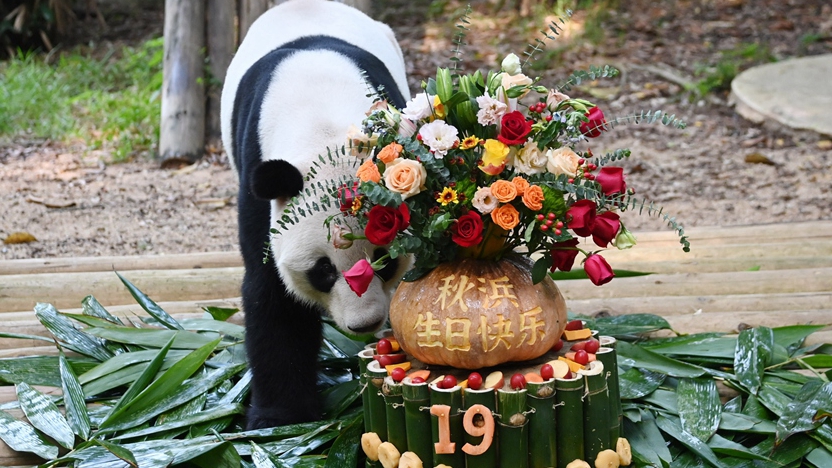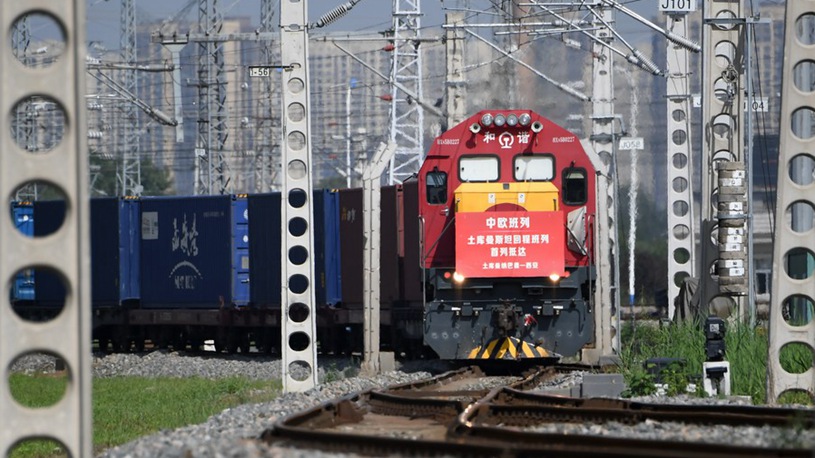Renewing Silk Road Spirit and Working for a Community with a Shared Future
More than 2,000 years ago, the ancient Silk Road was opened by the people in China and Central Asia, driven by a desire for friendship and mutual learning, thus starting a great era of exchanges between civilizations.
In the more recent era, a “new Silk Road” has brought China, Kazakhstan and Uzbekistan together again— the Belt and Road Initiative. It was first proposed by Chinese President Xi Jinping during his visit to Kazakhstan back in 2013. On the same trip, he also visited Uzbekistan including the city of Samarkand, a shining pearl on the ancient Silk Road.
From September 14 to 16, 2022, President Xi Jinping paid state visits to Kazakhstan and Uzbekistan again and attended the SCO summit in Samarkand.
The visits have drawn much international attention as it is President Xi’s fourth visit to Kazakhstan, third to Uzbekistan and the first time for the Chinese President to travel overseas since the onset of COVID-19 more than two years ago. The aim is to carry forward the Silk Road spirit, advance Belt and Road cooperation, and promote the building of a community with a shared future for mankind.
Good partners of BRI cooperation
Next year will mark the 10th anniversary of the BRI. Kazakhstan and Uzbekistan are among the first countries that expressed support for and took an active part in BRI cooperation. Nine years on, BRI cooperation has delivered fruitful results in both countries, making a real difference on the ground. The 100-MW Zhanatas wind farm and Shymkent Oil Refinery modernization in Kazakhstan and the upgrading of old hydro power stations in Uzbekistan all bear witness to robust BRI cooperation.
As the world’s largest inland country, Kazakhstan used to face many challenges in exporting its quality products such as wheat. Now with the China-Europe freight trains running through Kazakhstan and the bustling China-Kazakhstan International Logistics Base in the eastern Chinese port of Lianyungang, products from Kazakhstan can set sail for the Pacific Ocean.
For Uzbekistan, BRI cooperation-enabled connectivity is as important, if not more — in addition to being land-locked itself, its neighbors are all inland countries as well. Running through the mountains in Central Asia, the Angren-Pap railway line is a milestone project between China and Uzbekistan built under the BRI. The railway line’s main tunnel, the Qamchiq Tunnel, is the longest tunnel in Central Asia and considered a miracle in the history of tunnel building. With its completion, the railway line has now become part of an international transport corridor that links up China, Central Asia and Europe. And more transport potential is being unleashed from the China-Kyrgyzstan-Uzbekistan highway and the China-Kazakhstan-Uzbekistan railway. Uzbekistan is thus transforming from a land-locked to a land-linked country.
Friends in need
This year marks the 30th anniversary of China-Kazakhstan and China-Uzbekistan diplomatic relations. Over the past three decades, the two sides have all along supported each other on issues concerning core interests and stood together through thick and thin.
China has maintained close communication and cooperation with both Kazakhstan and Uzbekistan bilaterally and multilaterally on a wide range of issues such as combating the three forces of terrorism, separatism and extremism, organized crimes and drug trafficking. Such close security cooperation is a demonstration of deep political mutual trust.
During the visits, China reached broad consensus with both countries on deepening ties and furthering cooperation in priority areas including economy and trade, energy, railway and connectivity. Nearly 30 cooperation documents have been signed covering finance, water conservancy, the digital economy, green development and cultural interactions. It is particularly worth mentioning that a trilateral memorandum of understanding concerning cooperation on the China-Kyrgyzstan-Uzbekistan railway has been signed, a milestone in the building of a transport corridor on the Eurasian continent.
Embracing a shared future
Another highlight of President Xi’s visits is that China and Kazakhstan have agreed to work toward building a community with a shared future defined by lasting friendship, a high degree of mutual trust and sharing weal and woe. China and Uzbekistan also agreed to implement the vision of a community with a shared future at the bilateral level, adding new substance to bilateral ties.
One of the defining features of a community with a shared future is firm mutual support. China and the two countries are each other’s firm supporter for development and rejuvenation in this new characterization of bilateral relationship. This not only serves the long-term development of bilateral ties and people’s well-being on both sides, but also contributes to the positive forces in the world and to the building of a community with a shared future for mankind. It is of great significance in the current volatile and complex international environment and will become a new milestone in China-Kazakhstan and China-Uzbekistan relations.
In renewing the Silk Road spirit, advancing Belt and Road cooperation and working for a community with a shared future, President Xi’s visits represent both a continuation of the shared legacy and a right choice for the future.
China stands ready to work with both Kazakhstan and Uzbekistan to inject fresh impetus to their age-old ties, pursue common progress and make greater contributions to peace, stability and development in the region and the wider world.
It is a fresh starting point. Together, China, Kazakhstan and Uzbekistan are ready to embark on a new journey.
(Yi Fan is an international commentator based in Beijing)
Photos
 Park in S China's Shenzhen celebrates 19th birthday of giant panda during Mid-Autumn Festival
Park in S China's Shenzhen celebrates 19th birthday of giant panda during Mid-Autumn Festival China Fashion Week S/S 2023 concludes in Beijing
China Fashion Week S/S 2023 concludes in Beijing China-Europe freight train services see robust growth in August
China-Europe freight train services see robust growth in August Teenager from SW China's Yunnan gains widespread fame for steadfast dedication to sport of tennis
Teenager from SW China's Yunnan gains widespread fame for steadfast dedication to sport of tennis
Related Stories
- SCO injects more positivity into regional stability, development as Xi's proposals win hearts of int'l community
- Conviction, Commitment, Cohesion: Xi Steers SCO to Broader Prospects
- Xi returns to Beijing after attendance to SCO summit, visits to Kazakhstan, Uzbekistan
- Leaders of SCO member states sign Samarkand Declaration
- Full text of Xi's speech at SCO Samarkand summit
Copyright © 2022 People's Daily Online. All Rights Reserved.





